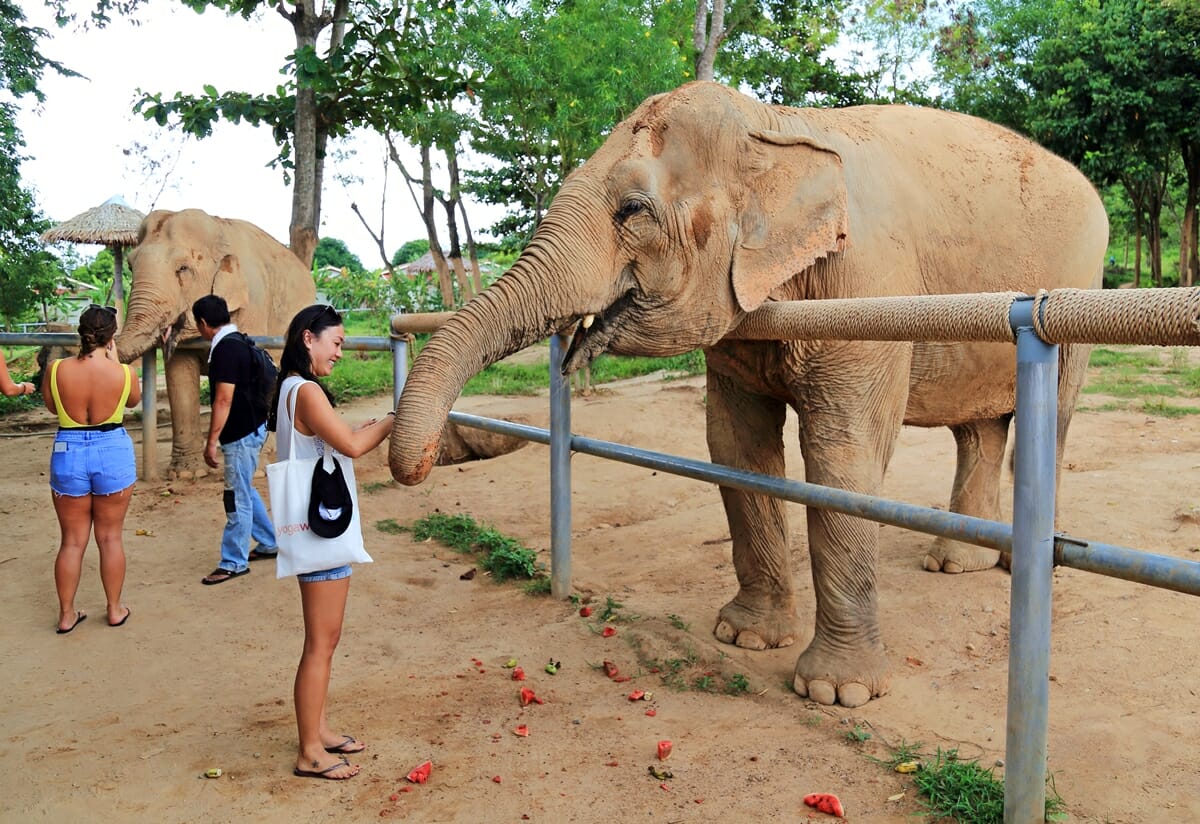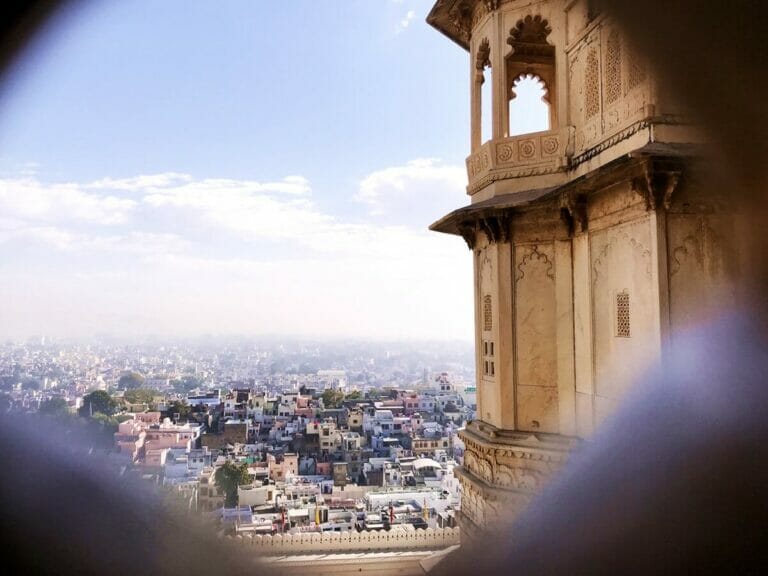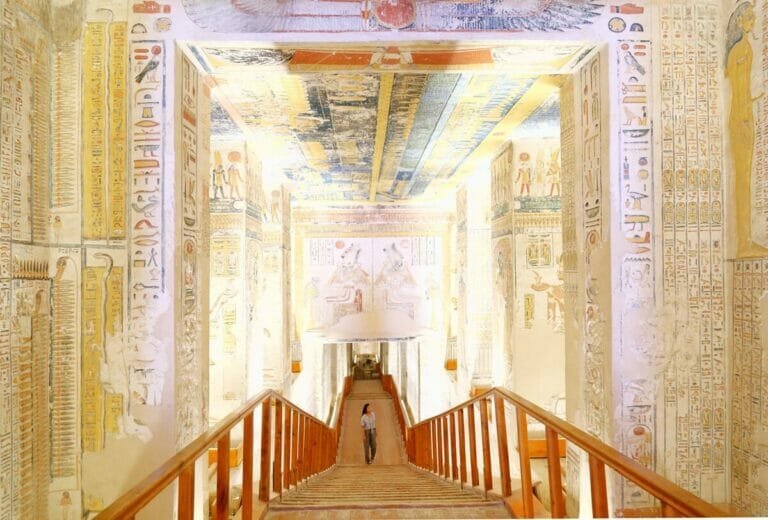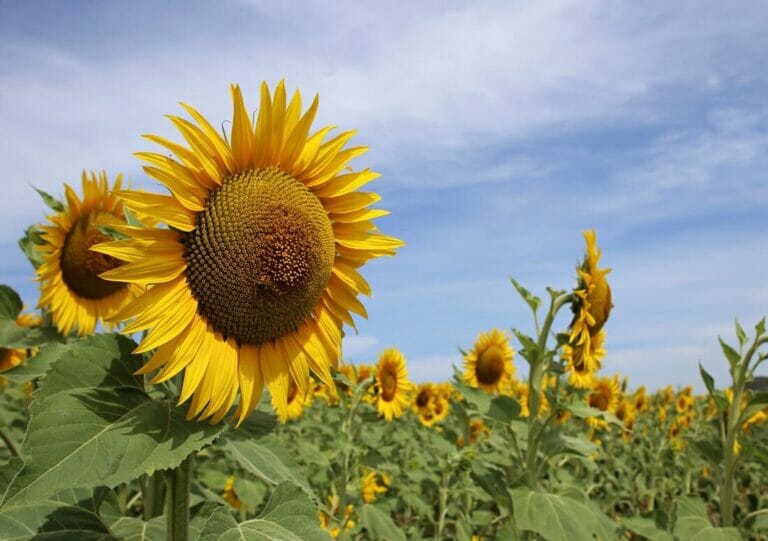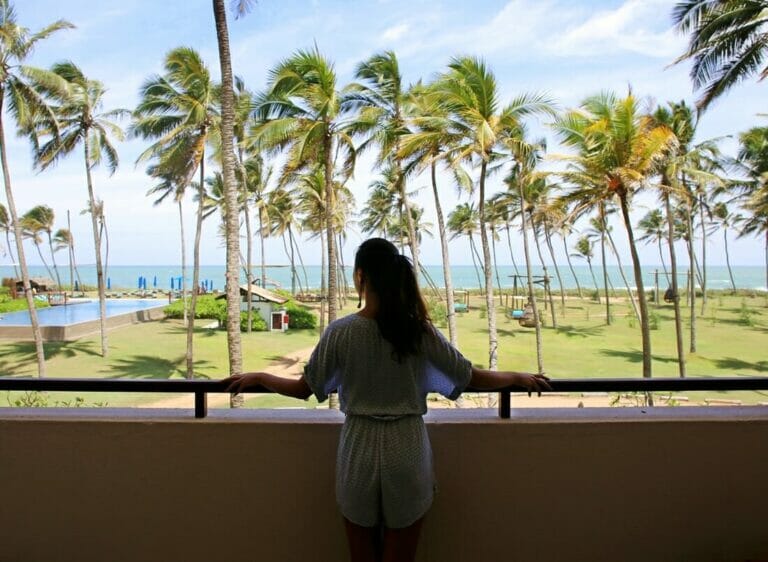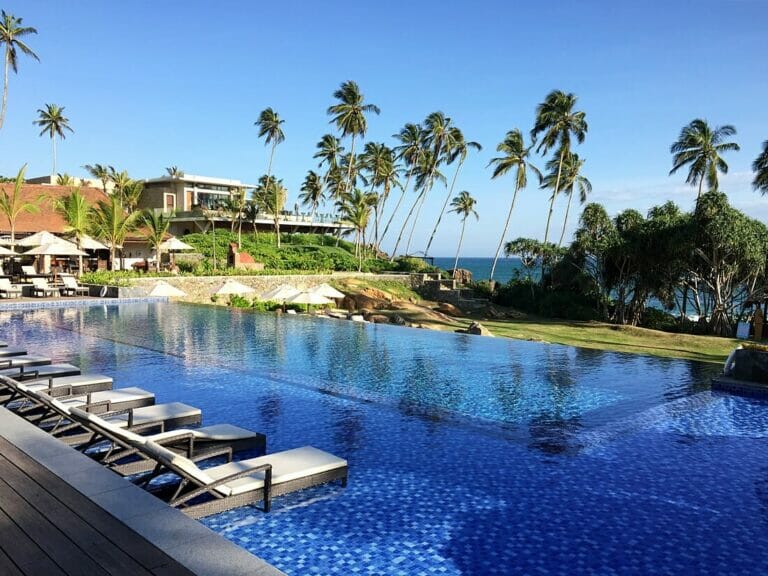Koh Samui Elephant Sanctuary: Rescuing Elephants from Riding Camps and Beyond
Looking for an ethical elephant sanctuary on Koh Samui? Read this first if you are thinking about riding elephants in Thailand!
As more and more people travel to Thailand for its beaches, food, temples and culture, unfortunately as does the number of people who are unaware of the cruelty involved with riding elephants in Thailand or visiting elephant shows where they are forced to stand on their front legs and trunks, paint and “play” soccer.
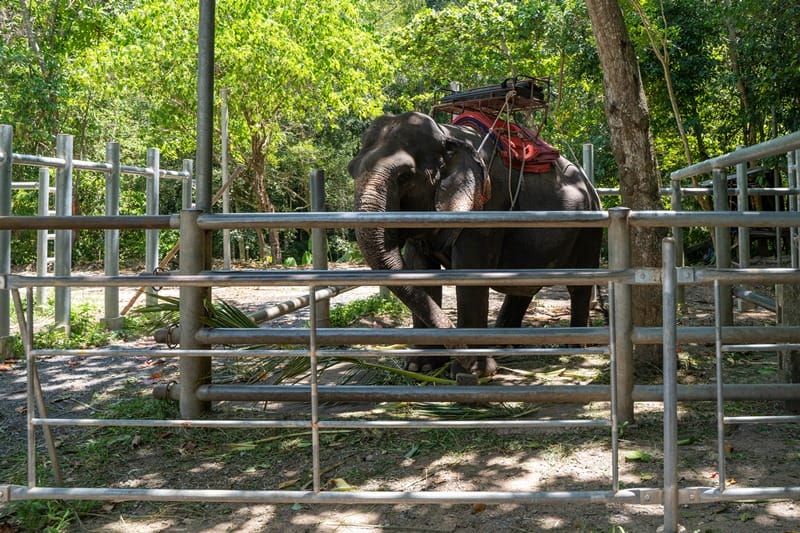
However, the good news is that there are places in Thailand like Elephant Nature Park in Chiang Mai that are giving elephants the opportunity to live out their lives without abuse while fulfilling tourist demands for elephant interaction experiences.
Read more: World Animal Protection published two reports on the conditions for elephants used in tourism in Asia. Click here for the PDF report and read the follow-up report here. Many statistics referenced in this post have been sourced from these two research reports.
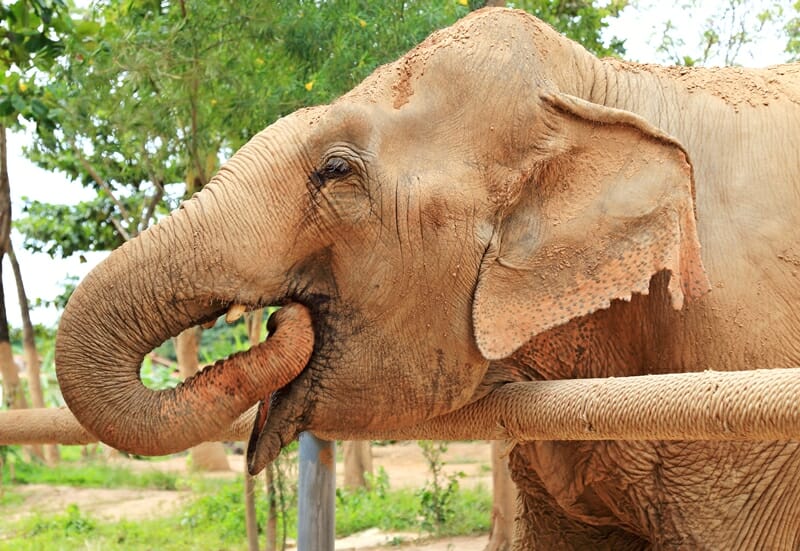
Now, there is a haven for elephants who have been subjected to years of abuse on the island of Koh Samui. Samui Elephant Sanctuary is the first elephant park in Koh Samui, offering no-riding elephant interaction experiences for visitors from all around the world.
Thinking about riding an elephant in Koh Samui? If you are visiting Koh Samui, check out Samui Elephant Sanctuary instead of one of the elephant riding camps on the island!
Looking for more ideas of fun things to do in Koh Samui? Check out my guide to planning a trip to Ang Thong Marine National Park or read this guide on some of the best things to do in Koh Samui
The current state of elephant tourism in Thailand
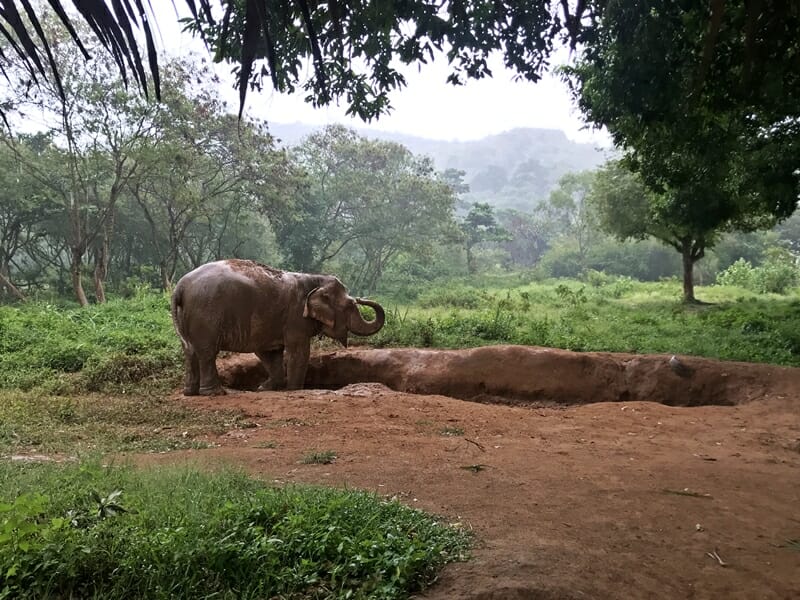
Some quick background information first: the wild elephant population in Thailand is on the decline as a result of destruction of natural habitat, poaching and human-elephant conflict. It is estimated that there are approximately 3,126–3,341 wild elephants in Thailand, and those who are free run the risk of being killed and separated from their young, who are then subjected to the phajaan, or being enslaved themselves into the tourism or logging industries.
Many elephant interaction and show venues receive more than 1,000 visitors a day, with elephant welfare practically non-existent as the animals are required to continually give rides, perform and interact with tourists all day long. Here are some more numbers to shock you from the latest World Animal Protection report in 2020: “Our research estimates that about 10.9 million (28%) of those [tourists] rode or planned to ride an elephant while on holiday in Thailand.” This number has gone up from 2014 according to their earlier report, which stated that 8.9 million tourists potentially sought out elephant rides in Thailand.
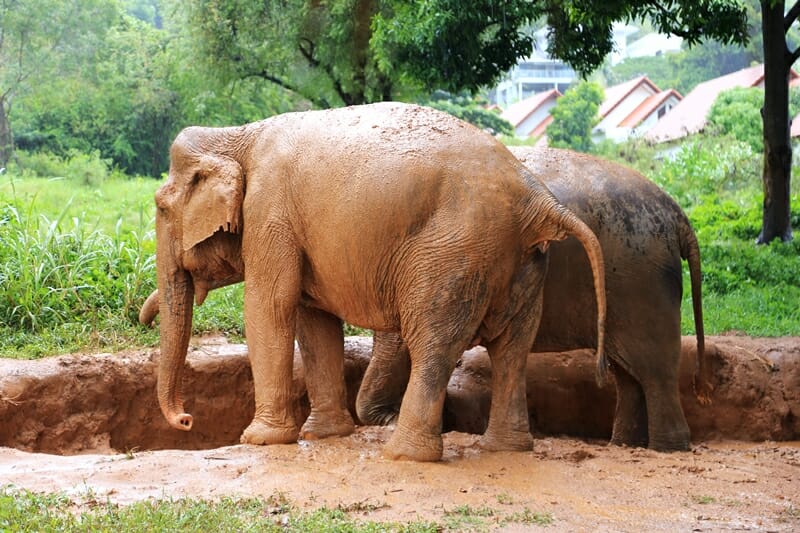
In fact, according to their latest report, nearly three quarters of the captive elephants used for tourism in Asia are used in Thailand – a whopping 2,798. These numbers speak for themselves, and unfortunately elephant trekking in Koh Samui remains a popular activity for tourists.
The good news is, with an increase in education and awareness there is some shift towards a rise in no-riding and ethical facilities. Samui Elephant Sanctuary and Elephant Nature Park, along with several others, are leading the charge towards more ethical interaction experiences with these gentle pachyderms.
* WWF-Thailand, Thai Elephant Conservation Center (government entity), Center of Excellence in Elephant and Wildlife Research at Chiang Mai University.
Interested in reading more about responsible and ethical tourism in Southeast Asia? Click here for 10 things you should know before you visit Southeast Asia!
What is Samui Elephant Sanctuary?
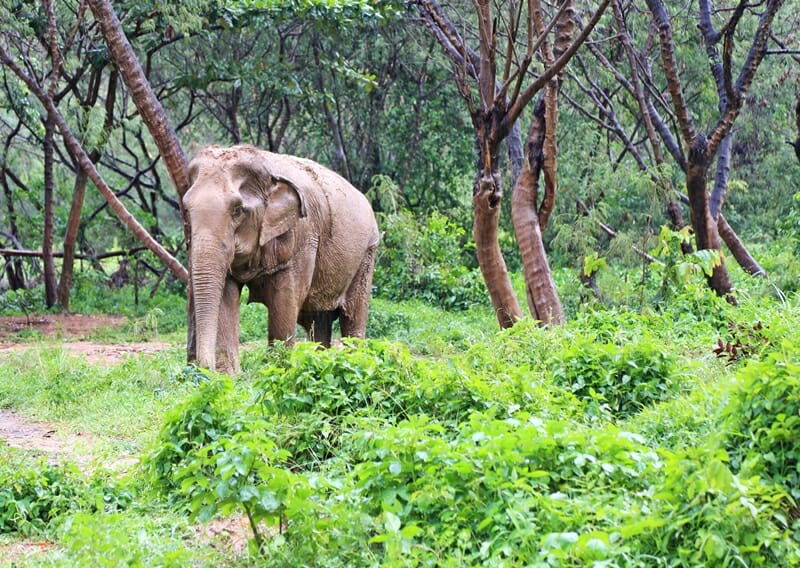
Samui Elephant Sanctuary is an ethical elephant sanctury in Koh Samui and is currently home to approximately a dozen rescued elephants. It is one of the best places to visit in Koh Samui with two elephant sanctuary locations in Bophut and Chaweng Noi.
Its operation model was inspired by the Save Elephant Foundation that runs Elephant Nature Park in Chiang Mai. The park was recently established with the aim of serving as a sanctuary and rescue centre for elephants and is listed by World Animal Protection as one of the “best practice elephant venues” in Asia.
The elephants at Samui Elephant Sanctuary have been rescued from riding and trekking camps, the logging industry, circus shows or from street begging. As you can imagine, many arrive in poor physical and psychological condition as a result of the horrific abuse.
Since opening Samui Elephant Sanctuary in January 2018, the team has also opened Samui Elephant Haven, a “sister” project”, in August 2018. Samui Elephant Haven is currently home to a dozen or so elephants and shares Samui Elephant Sanctuary’s objective of providing a home haven for rescued elephants: guests are invited to sit back and watch the elephants interact with each other. You can read more about visiting Samui Elephant Haven here.
Where to stay in Koh Samui
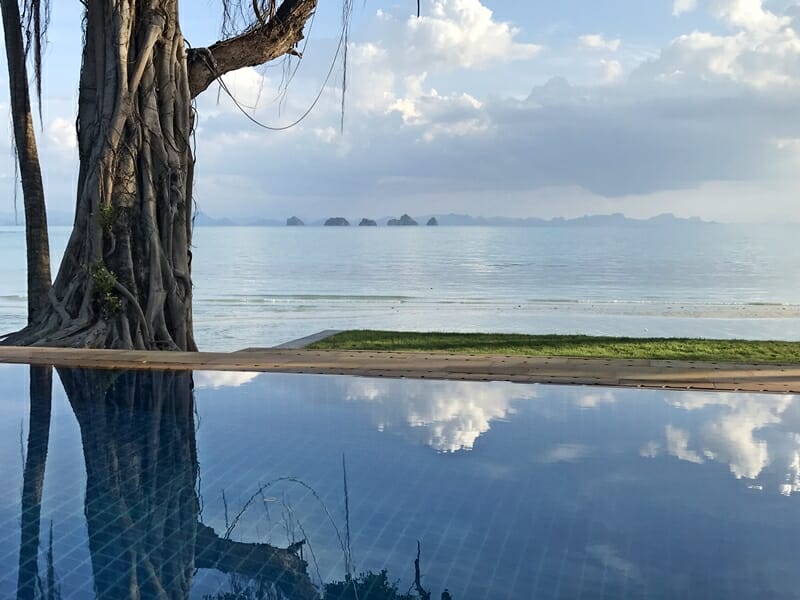
I usually stay at Villa Waimarie in Lipa Noi – it is my family’s timeshare property and is on one of the most pristine and uncrowded beaches in Koh Samui. The beachfront villa has 6 bedrooms, a tennis court, an indoor and outdoor lounge area, pool and amazing kitchen.
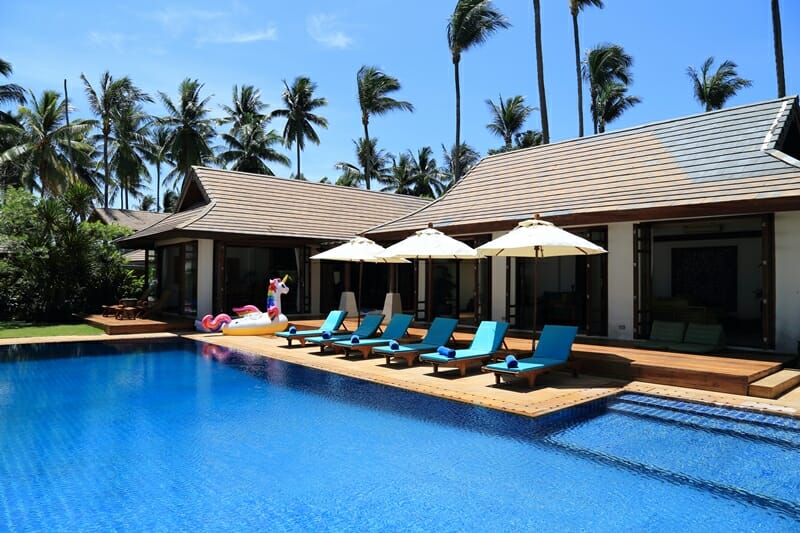
It’s a fantastic luxury villa in Koh Samui to book if you have a large group of people, and serves up the most incredible Thai food. Click here to check availability and rates for Villa Waimarie.
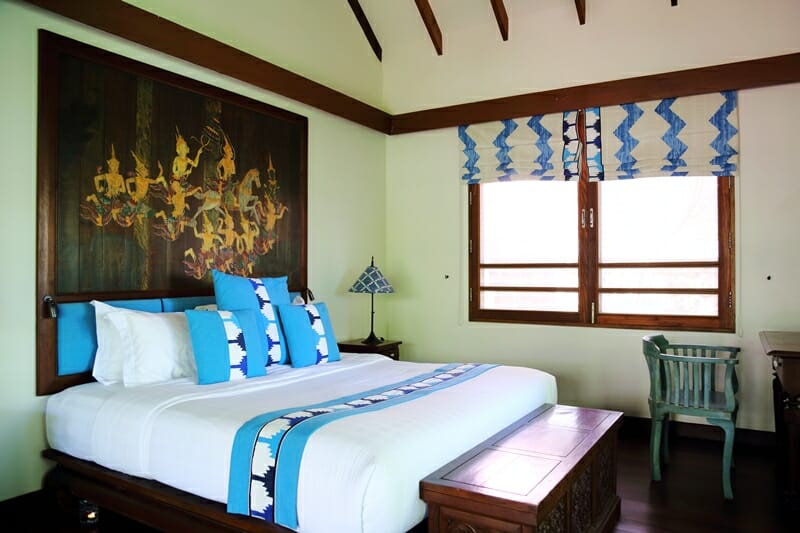
Prefer to stay closer to the airport? Here are a few additional luxury and boutique hotels in Koh Samui that you may want to consider, or click here to see other highly rated hotels in Koh Samui!
Wild Cottages Sanctuary: A brand new boutique hotel in Bophut that overlooks an elephant sanctuary that spans approximately 10 acres. This has allowed a few of the herd from another elephant sanctuary, Samui Elephant Haven, to move over to roam around the larger space. You can check reviews and availability here.
Marasca Samui: I’ve had my eye on this boutique hotel for a while now and have stayed at their sister property in Khao Yai. Marasca Samui is a brand new beachfront hotel in Chaweng with an attached beach club. The rooms are stunning and modern, and even offers 2-bedroom suites as a option for families. Check rates and availability here.
Hyatt Regency Koh Samui: If it is facilities you’re after, you can’t go wrong with Hyatt Regency in Chaweng. There are several pools to choose from – including a pool for adults and separate kids pool, as well as a kids club that past guests rave about. The rooms are modern and spacious, and reviewers say the service is top notch. Check rates and availability here.
🛏️ Booking hotels in Thailand: We love to use Booking.com to find and book accommodation in Thailand as it has a huge range of options and the review system makes it easy find out what previous guests liked (or disliked). From luxury hotels with rooftop pools to boutique guesthouses, you’ll have no problems finding something that fits every budget. Explore the huge range of hotel options in Thailand here.
Why visit Samui Elephant Sanctuary?
Elephants are incredible creatures, and the opportunity to interact with them and observe them is outrageously humbling. While I do believe that there is no better place for elephants than in their natural habitat, the reality is that it is no longer possible for these particular elephants in Thailand for a number of reasons.
Additionally, elephants, though big, are actually not great at bearing weight and have sharp protrusions from their spine which make it painful for them to carry load (like people) on their backs. So if you are looking into taking part in an ethical elephant interaction experience in Thailand, I would recommend visiting and supporting a facility such as this one over a trekking camp or show.
Some food for thought: according to the World Animal Protection organization, “a true elephant-friendly venue is purely observational for visitors, where the safety of visitors and wellbeing of elephants is not affected by the need to constantly control the animals. The elephants would be managed in humane ways through the mahout who allows a maximum of freedom or through advanced ‘protected contact’ techniques.” Read more about how to be an elephant-friendly tourist here.
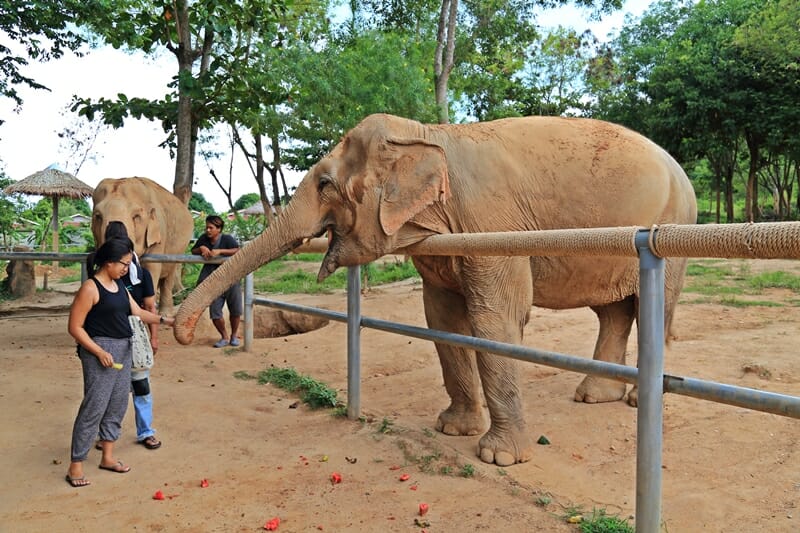
At Samui Elephant Sanctuary the elephants freely roam the premises and are supervised by their mahouts. Although the property is much smaller than some other elephant sanctuaries, the elephants get fed well, can wander around, receive the medical care that they need, and most importantly are not subjected to hauling tourists around on their backs or performing stunts and tricks for visitors’ amusement.
How to book a trip to Samui Elephant Sanctuary
Samui Elephant Sanctuary offers and easy online booking system that shows you which dates are available. You can either book the morning tour (9 AM to noon) or afternoon tour (2 to 5 PM). The experience set me back 3,000 THB per adult (approx. 90 USD) or 1,500 THB for children aged 4-11. Children under 4 can participate for free. These rates include transportation to/from the park and a vegetarian buffet. You can check out all of the different visit options here.
What to expect from your time at Samui Elephant Sanctuary
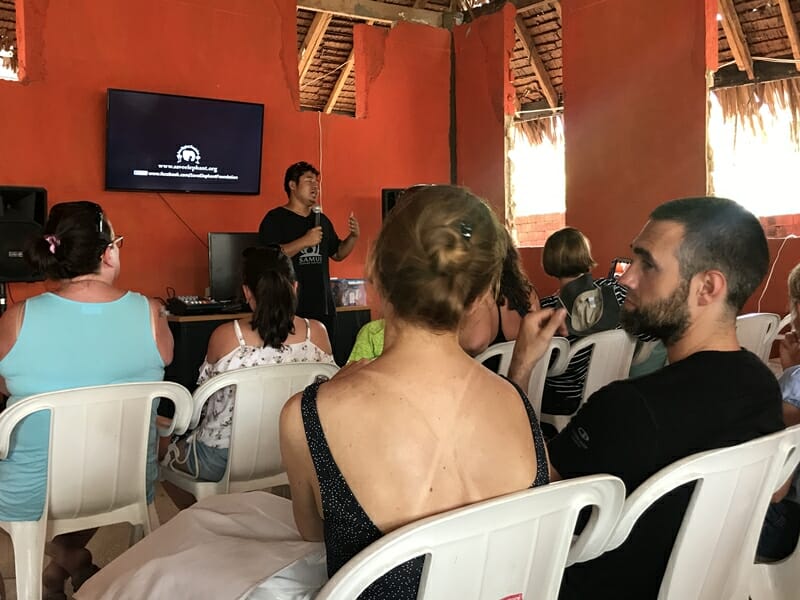
During your day at Samui Elephant Sanctuary you are picked up at 7-8 AM in the morning or 1-1:30 PM in an A/C van depending on which tour you choose. Once you arrive at the sanctuary, you will be given a quick briefing on the philosophy of the park, its history and code of conduct (don’t pick up food off the ground if you drop it – the elephants will think you’re taking their food!). When we visited in July, there were approximately 45 people visiting the park at the same time.
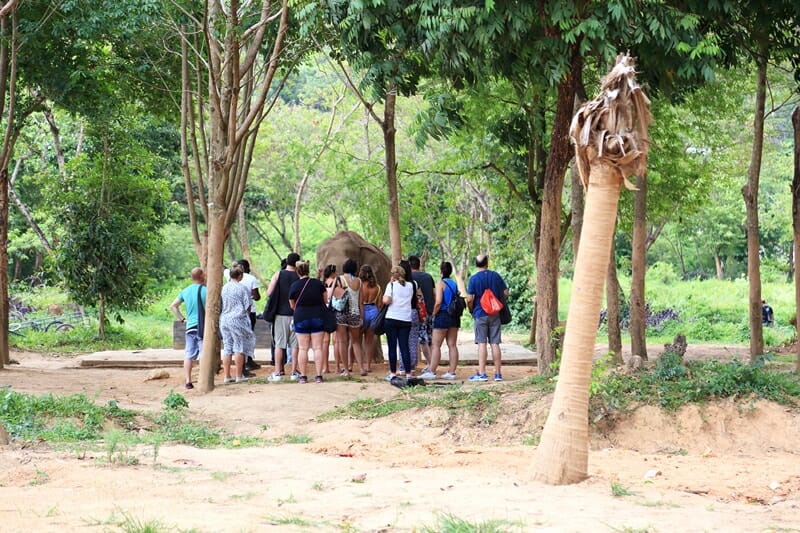
From here, the entire group is taken to a fenced area where you can feed watermelon chunks and banana pieces to 3-4 elephant residents. We stayed here for about 45 minutes and then were divided into groups of 15 and led through the different areas of the park and given the opportunity to observe the herds.
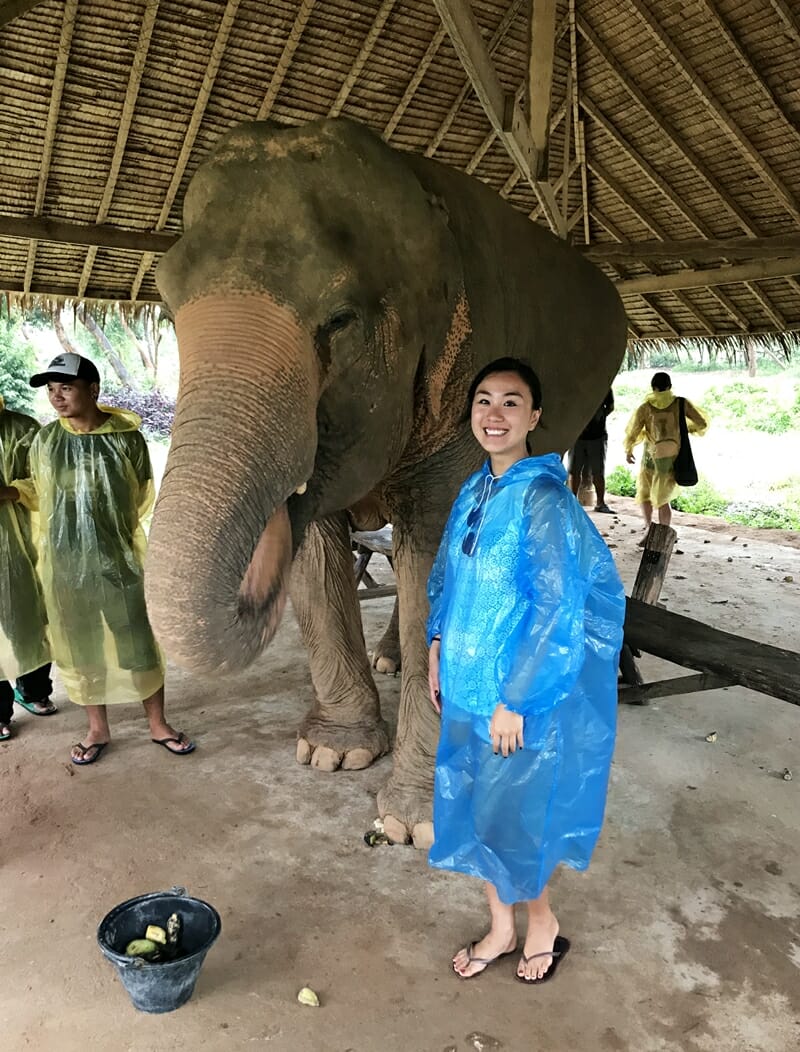
When we visited, a massive storm hit and we were led to an undercover area to continue feeding the elephants and watch them enjoy their mud baths. The staff handed out ponchos and we huddled under a thatched roof alongside the resident elephants and handed them banana after banana – did you know that elephants eat up to 300 KG of food each day?
If you have previously visited one of the sanctuaries in Chiang Mai, you should adjust your expectations before you visit Samui Elephant Sanctuary as the scale is much smaller. There are 8 elephants at this park (as opposed to dozens), and the grounds are not as sprawling as some of the parks in northern Thailand. The elephants do wander around relatively freely, are fed and treated well from what we can tell, and are not subjected to any riding or activities purely for tourists’ pleasure.
Like Elephant Nature Park in Chiang Mai, you cannot bathe the elephants at Samui Elephant Sanctuary but you can observe the elephants bathe themselves. The length of the tours is also shorter (3 hours as opposed to half a day/full day/overnight) than many of the itineraries at other parks in Thailand.
Some reviews comment on the fairly expensive entry price for Samui Elephant Sanctuary, and I understand where they are coming from – but if you’re going to spend money on an elephant interaction experience, don’t opt for a trekking camp just because it’s far cheaper. Make sure your tourism dollars go towards a facility that enables interaction with elephants without cruelty and bsue.
The fact is, there are only 30,000 or so Asian elephants left in the world, and visiting Samui Elephant Sanctuary is one way to interact ethically with elephants without contributing to animal cruelty and abuse. Before you decide to go elephant trekking in Koh Samui, please do your research and visit Koh Samui elephant sanctuary instead!
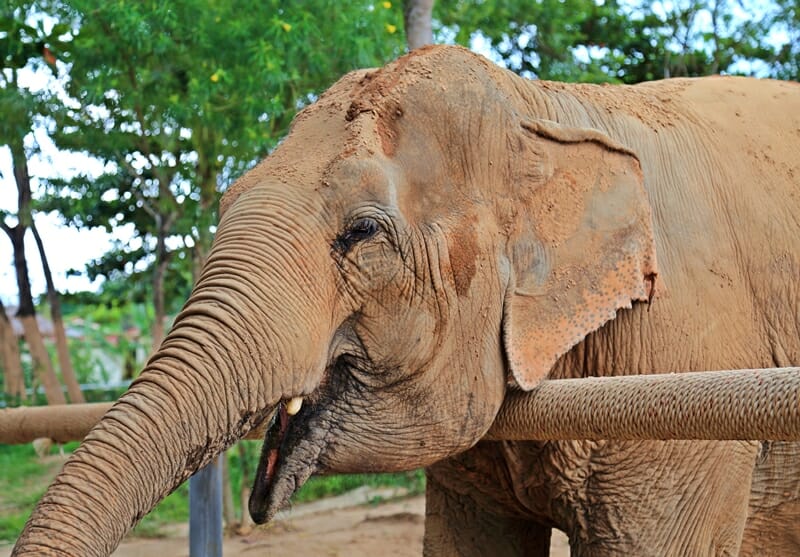
After the tour, you can enjoy the Thai buffet and sip a cup of tea before being transported back to your hotel.
Ready to book your Koh Samui getaway? For a luxury villa option check out Villa Waimarie on Lipa Noi beach in the west. This 6-bedroom villa comes fully staffed with a tennis court, swimming pool, indoor TV and lounge room and dining room. You might also consider Wild Cottages Sanctuary (boutique hotel overlooking an elephant sanctuary in Bophut), Marasca Samui (modern boutique hotel in Chaweng with an attached beach club) or Hyatt Regency Koh Samui (5-star property with the facilities to match). For more options click here to see other highly rated hotels in Koh Samui!
Have you visited Samui Elephant Sanctuary or can you recommend some other ethical elephant sanctuaries in Thailand? Let me know in the comments section below!
You might also want to read these guides:
- Looking for more ideas of fun things to do in Koh Samui? Check out my guide to planning a trip to Ang Thong Marine National Park
- Thinking about riding elephants in Thailand? There are more ethical alternatives like Elephant Nature Park in Chiang Mai and Samui Elephant Haven in Koh Samui
- Interested in reading more about ethical elephant experiences? Click here for more sanctuaries, orphanages and parks that you can visit around the world
- Headed to Thailand? Check out this 10 day Thailand itinerary for some planning ideas
- Read more about responsible and ethical tourism in Southeast Asia – click here for 10 things you should know before you visit Southeast Asia
Pin this for later!
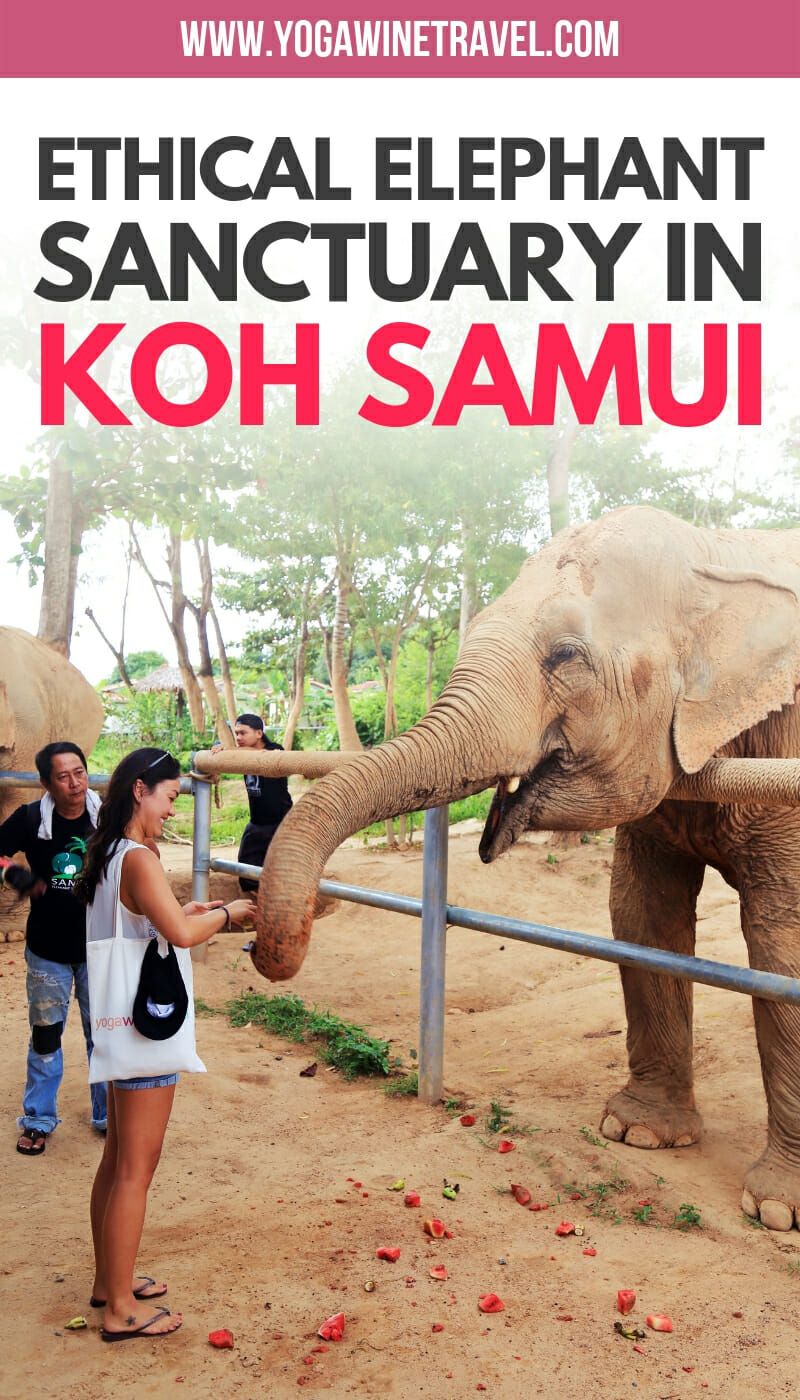
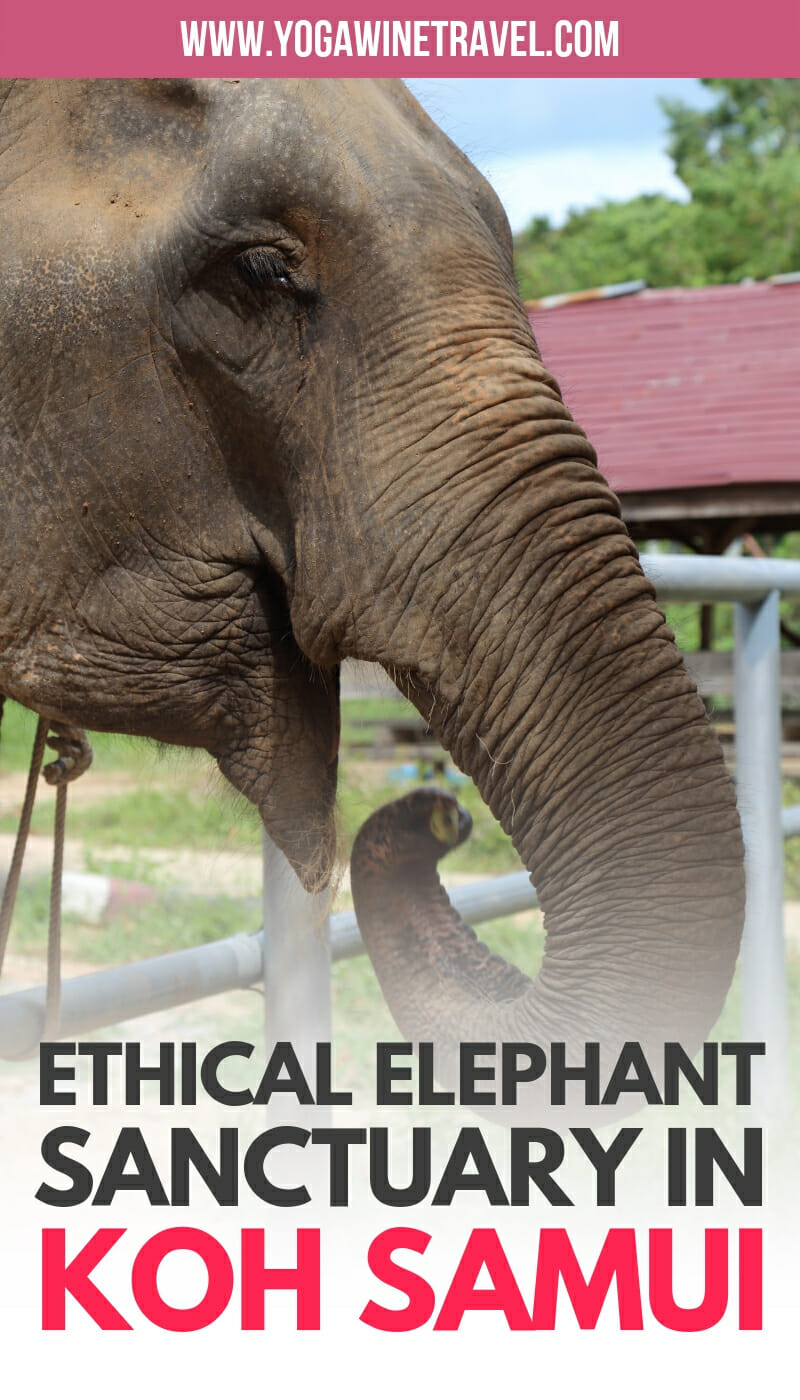
This post contains affiliate links. If you choose to book using these links, I will earn a small commission at no extra cost to you. Thank you for supporting my website by using these links.
Enjoyed reading this article? Subscribe to the mailing list!
* Unsubscribe at any time. Your e-mail address will only ever be used to send the occasional Yoga, Wine & Travel newsletter.

